Lacto fermented Wild Garlic is quite a mouthful to say and sounds quite complicated, however the truth is, making this is really quite simple, more simple than making a pesto & it stores for the whole year until the next Wild Garlic season comes along.
What is Lacto Fermentation?
Lacto fermentation is the process of fermenting, typically vegetables, in an anaerobic & salted environment.
I’ve popped a lovely link in the reference section at the bottom to get some serious detail about Lacto fermentation.
This simply means not allowing air to touch the vegetables and keeping the vegetables within a salted liquid.
The salted liquid can either be the liquid that comes out of the vegetables themselves or can come from brine or a mixture of salt and water that you pour over the vegetables themselves.
Salt:
For Lacto fermentation we use either sea salt or rock salt, I often use coarse salt if I’m trying to break something down – like the wild garlic leaf and fine with a crunch vegetable I want to hold its shape like thistle hearts or burdock roots.
The volume of salt is typically somewhere between 1 – 10%, 1% to 10% is quite a big difference and it depends on what you’re trying to achieve.
1% salt will ferment really quickly and is good if you want to:
- eat the whole lot quicker,
- the lower level of salt is good for sauces as it won’t keep your veg crispy either.
10% – you can keep going with the salt but it becomes uneatable after 10% – I usually use higher salt percentages when:
- I want to keep vegetables more crunchy – like burdock roots
- The vegetables I’m using have a tendency for going off
- I’m trying to store them for a long time (maybe the next season is a long way away – like wild garlic)
- I want to promote a slow fermentation
- I’m planning to use the finished result for more of a stock instead of eating it straight out of the jar.
Water:
Try to use spring water where you can but tap water will work also (if it’s high in chlorine leave it to stand in an open bowl for at least 1 hour before using it – to allow the chlorine to evaporate)
What’s Lacto bactillia?
There’s a much more complex process than the one I’m just about to describe with many different things going on but I’m going to keep it simple here.
The salt stops the bad bacteria from developing and allows the good bacteria or the bacteria we’re after, to grow and develop.
This good bacteria outcompetes the bad and is allowed to grow, helping to preserve the item and giving us some gut boosting properties too,
Here’s a great write up about everything lacto fermentation
What part of Wild Garlic Can I use?
You can use every part of the wild garlic for fermenting, leaves, stems, flowers and roots.
I quite like the whole mix as it provides a varied texture but if you’re looking for something super smooth then just use the green leaves.
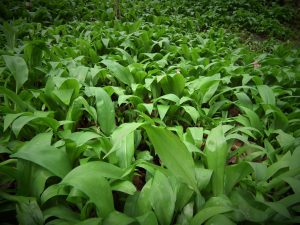
Ingredients:
We’re using around 6-7% salt for this one as we’re planning to ferment it now to last all of the way through to the start of the wild garlic season (which is almost 9 months away)
- 500g Wild Garlic
- 40g Sea Salt
Method:
- Chop the Wild Garlic up fine (or blitz in a blender until smooth)
- Pop the Wild Garlic in a bowl and stir through the salt
- Pop the whole lot in a jar or a number of jars and cover the top with a bit of cloth – leave it at room temp for about 5 days
- After 5 days pop it in the fridge and enjoy as a wild garlic paste in food
This one is a little salty so the fermentation is quite slow, meaning it won’t get super sour, however it also means it’s salty so if you just make sure to not add any extra salt to the food you’re adding it to it will work a treat for you 🙂
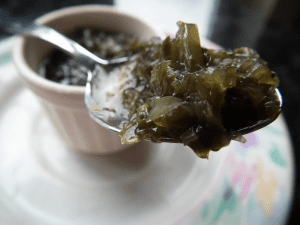
Lacto Fermented Wild Garlic Recipe Video
https://youtu.be/AWtowbP5Ii0
What next?
You can actually dry out the lacto fermented Wild Garlic, either in a low oven or a dehydrator until it’s nice and crisp – this is amazing for sprinkling on top of food as a garlic salt and tastes a bit like monster munch crisps 🙂
Fermentation is one of the oldest — and most magical — ways to preserve food and boost its flavour. From tangy krauts to fizzy foraged sodas, it’s a process that transforms simple ingredients into something alive, nourishing, and full of character. These recipes are all about slowing down, getting hands-on, and letting wild microbes do what they do best. Whether you’re new to fermenting or looking to try something a little different, there’s something here to spark your curiosity — and your taste buds.
If you’re hungry for more fermented recipes, click here to explore!



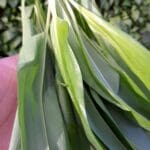

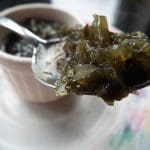
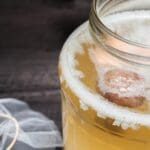
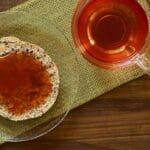
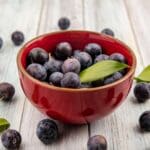



Leave a Reply
You must be logged in to post a comment.